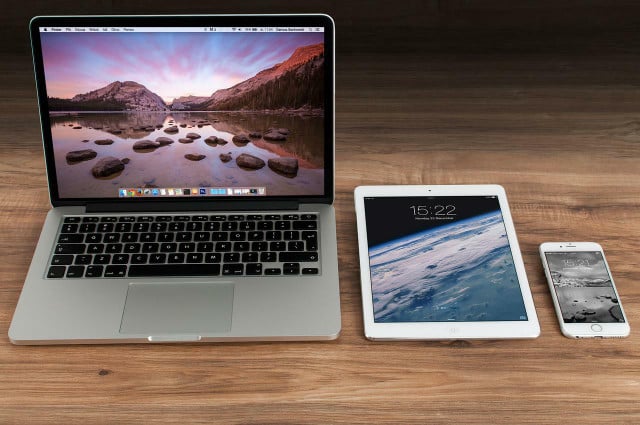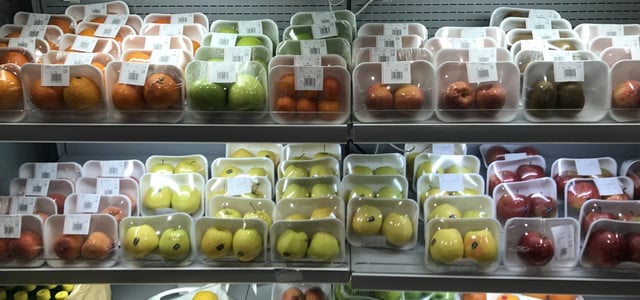Apple products are manufactured and assembled by different companies worldwide. Here’s where Apple products are made and if the company is sustainable.
When you buy an Apple product like an iPhone, MacBook or iPad, the packaging tells you that it was designed in California; but that doesn’t mean the products were manufactured there. Although the company designs and sells them, Apple doesn’t manufacture or assemble its own products.
Apple uses companies all over the world to deliver the individual parts that go into making the items it sells. Hundreds of companies specialize in its individual components. The iPhone battery, for example, is manufactured by China’s Sunwoda Electronic, Tokyo-headquartered Sony manufactures its camera and Xintec, based in Taiwan, makes its Touch ID. Once manufactured, Apple parts are assembled by Foxconn and Pegatron, companies based in Taiwan.
How Are Supply Chain Workers Treated?



(Foto: CC0 / Pixabay / Firmbee)
Apple has employed over 21.5 million workers in its supply chain since 2008. The company manufactures its products in East and Southeast Asia, where the labor is cheap. According to the New York Times, workers at the world’s biggest iPhone factory in Zhengzhou, China, are paid just $3.15 an hour. The labor force in this part of the world is also abundant.
Foxconn, one of the two companies Apple uses to assemble its products, has almost 1.3 million employees in mainland China. Reports have found that working conditions at the Foxconn factory compound are poor and include long working hours, dangerous conditions, low pay and few workers’ rights.
Working long hours in a factory like this can be tiring and physically demanding. One worker at the Foxconn factory reported that she helps assemble 1,700 iPhones daily. In 2010 alone, there were 18 reported suicides at the factory and 14 confirmed deaths. The situation has not improved since, with Apple’s 2019 Supplier Responsibility Progress Report detailing 27 labor and human rights violations.
There are also ethical issues with Apple’s supply chain in other parts of the world. In 2019, the Guardian reported that Apple was named (along with Google) as a defendant in a legal case launched by human rights firm International Rights Advocates. The lawsuit was filed on behalf of families from the Democratic Republic of Congo who claimed Apple assisted in the injury and death of children working in cobalt mines in their supply chain.
The reality for workers on the assembly lines in developing countries shows how Apple benefits from low labor costs through poor working conditions and low pay.
Is Apple Environmentally Sustainable?



(Foto: CC0 / Pixabay / tranmautritam)
Apple sets ambitious sustainability goals, and the company has made many improvements in recent years to become more eco-friendly. Its environmental pledges include:
- Carbon neutrality. In 2020, Apple declared that by 2030 it will be carbon neutral across the whole company — including the manufacturing supply chain. This means that every Apple product sold will have a net zero climate impact. According to the NewClimate Institute’s Corporate Climate Responsibility Monitor report, Apple reduced its carbon footprint by 29 percent between 2016 and 2020. However, the report notes that Apple’s pledge to be carbon neutral by 2030 could be misleading. Although they are already carbon neutral on their operations, business travel and employee commuting, this is only 1.5 percent of Apple’s carbon footprint. The remaining 98.5 percent comes from their supply chain — posing a significant challenge for their 2030 timeline.
- Renewable energy. Since 2018, all Apple buildings, including its stores and offices, have run on 100 percent renewable energy. In 2019, Apple won the United Nations Global Climate Action Award. The UN recognized Apple’s commitment to moving towards renewable energy sources, in particular.
- Reduced plastic. Apple has reduced its use of plastic packaging by 75 percent since 2015. The company also aims to remove all plastic from its packaging by 2025. Although Apple states they will reduce plastic usage, the company still uses many other non-renewable resources to make their devices. Apple sources natural resources like gold, aluminum, zinc and copper, which are used to make different parts of their devices. The mining of natural resources has a range of negative impacts on the environment, including water pollution, deforestation and harm to ecosystems.
- Conserving energy. Apple has also made a 70 percent reduction in average product energy since 2008 and brought online 10GW of clean energy for their manufacturing supply chain.
- More recycling. In their 2021 Environmental Progress Report, Apple pledged to use more recycled materials to build their products. The iPhone 12, for example, is made from 99 percent recycled tungsten.
The Downside to Apple’s Sustainability Goals



(Foto: CC0 / Pixabay / Firmbee)
The fact that Apple releases new iPhones, iPads and Macbooks every year brings into question whether the company really cares to fulfil its sustainability goals. Regularly introducing new products encourages the throwaway culture and consumerism that is already tough on the environment and contributes to climate change and high carbon footprints.
The cost associated with repairing products like iPhones is high and often inclines consumers to buy new products rather than get the ones they have fixed. 71 percent of Apple’s carbon emissions come from manufacturing, so it’s a problem for the environment if new products are constantly being manufactured.
A November 2020 report by UK’s House of Commons Environmental Audit Committee highlights how Apple contributes to the throwaway culture of short-lived products, due to making parts of the device difficult or expensive to repair. For example, fixing a cracked screen on the iPhone 12 costs around $279. In some cases, this could be half the cost of a new phone. Apple also publicly opposes and lobbies against Right to Repair Bills in the US. If these Bills were passed, Apple would be required to provide repair information and tools to third parties, letting customers easily repair damaged devices. Apple claims to be environmentally sustainable, but they also encourage mass consumption — two very contradictory ideas.
Read more:
- How to Clean Your Phone: Keeping it Clean and Germ-Free
- Techlash: A Democratic Move or a Threat to Sustainable Growth?
- Can Dematerialization Help Build a More Sustainable World?
Do you like this post?









